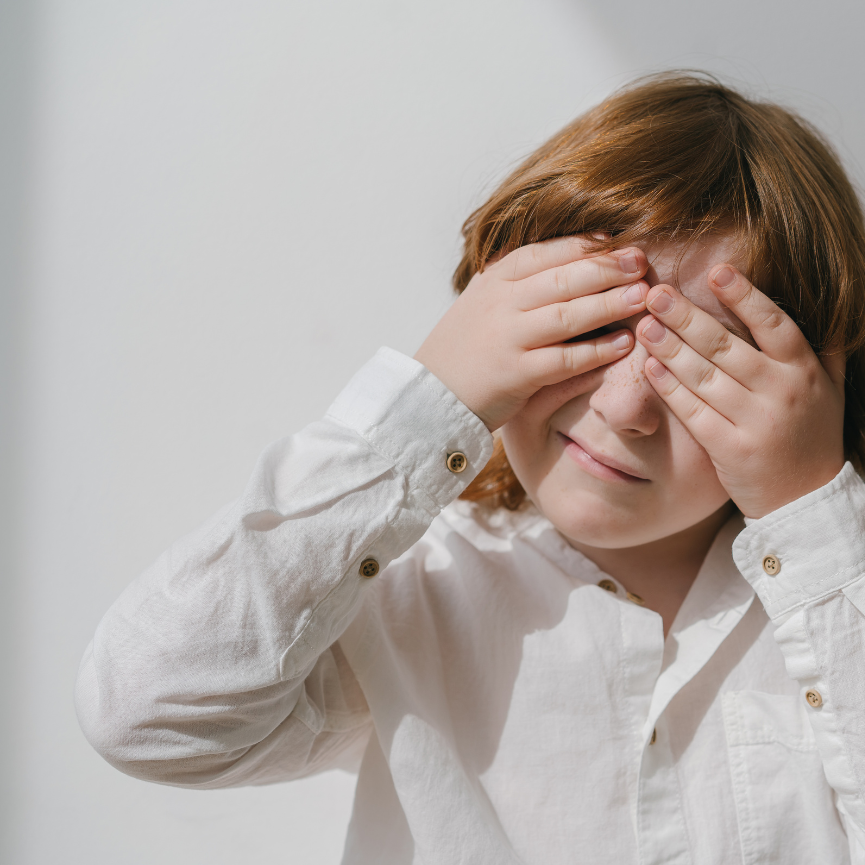
- May 11, 2024
- 181 Views
- 0 Comments
Navigating Light Sensitivity In Children With Autism
Harsh lights irritating your child? Does your child react unfavourably to certain lights or seem worried or anxious in the presence of certain light stimuli? Do you want to know what sensory lights could have a calming effect on your child? GodsOwnChild brings you some solutions through research and expert opinions Discover what you can do by reading on.
Lighting plays a big part in how we view our surroundings. An external stimulus that causes an autistic child to behave in a particular way either makes them hypersensitive or not.
The way a child reacts to his environment based on how he interprets visual information directly affects how they behave. Making them feel secure is crucial, whether they are inside or outside.
Impact of light stimulus on Autistic children
When it comes to how they react to light, sound, and smell, not every autistic child exhibits the same behaviour.
While some kids can feel perplexed or anxious, others might be completely unaffected and require further sensory stimulation to respond or react appropriately.
Although no conclusive research has been done to determine the exact effects lighting may have on an autistic child, it has been observed that in some extreme situations, particularly in the advanced stages of autism, children may become hypersensitive to lights or develop photophobia.
To ensure that your autistic child has better visual experiences for simple processing, follow these simple measures.
Light sensitivity indicators
- Various physical symptoms are direct indicators of light sensitivity issues.
- Check to see whether your child feels uneasy or worried around bright or fluorescent lighting.
- Check if they are closing, shielding, or squinting their eyes to avoid light.
- See if they become agitated when the light flickers or buzzes.
- Look to see whether they are becoming afraid of the light from the flashing cameras.
In the long run, some of these problems may impede your child's development and attention span and have a detrimental impact on their academic performance or social behaviour, therefore, it is critical to recognise and address them right away.
Chose the lighting at your home carefully
- Choose the colour wisely. Your autistic child might not react well to lighting with artificial hues. The colour should be kept as near to natural illumination as feasible. They respond favourably because neutral or natural colours have a calming influence on their mental health.
- Avoid flickering lights, especially fluorescent ones that have artificial colours. Most people would not notice this, but autistic children are very sensitive to light flashing and may not react well.
- Avoid lighting that creates noise: Some autistic children are sensitive to sound, thus fluorescent lighting should be avoided.
- Dimmable lights are key: Use dimmable lights at home to keep the brightness under control as your autistic child might not respond well, get confused, or be anxious if the brightness is too high.
- Get rid of anything shiny. It's best to keep your autistic child away from bright sunshine, computer screen lighting, and polished floors because these can be difficult for them to process.
- Windows with tinted glass are a fantastic way to prevent strong sunlight, while it's best to make your youngster wear sunglasses to reduce the effects of fluorescent lights.
Colours directly impact behaviour
- Your autistic child may have trouble processing loud, startling colours like red or yellow. Your autistic youngster will likely react differently to bright colours than the average person will to light. An autistic child finds bright colours to be exceedingly uncomfortable.
- The sensory system of your youngster will not be disturbed by monochromatic colours, which are good. If you're considering decorating your home, any wall hangings or artworks created in monochromatic colours are advised.
- While painting your wardrobe, cupboard, or wall cabinets, stay away from fluorescent or any bright colours.
Importance of sensory lighting in addressing autism
The well-being and mental health of your child is positively impacted by natural or neutral lighting. Not just the colour, but also the design and the location are important. How many lights are in a single room? When looking for your own home, everything must be taken into account.
To determine what works and what doesn't, you might want to make a mental note of the lighting setup in your child's classroom, the equipment utilised to help them, etc.
The finish of the floor, the type of windows utilised, the colour of the furniture, and the doors are additional factors to consider when thinking about sensory lighting for your home. By providing adequate lighting, you can help your youngster feel safe and at home.
Most people place more emphasis on aesthetic appearance when purchasing than on potential visual effects on autistic children.
Children with autism frequently experience light sensitivity, which needs to be taken carefully.



Comments - 0 comments till now